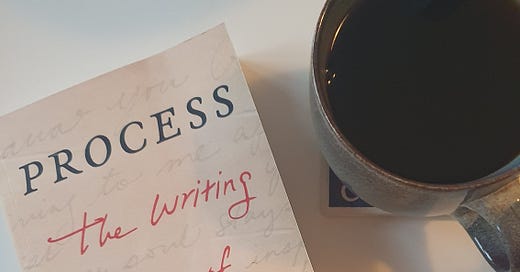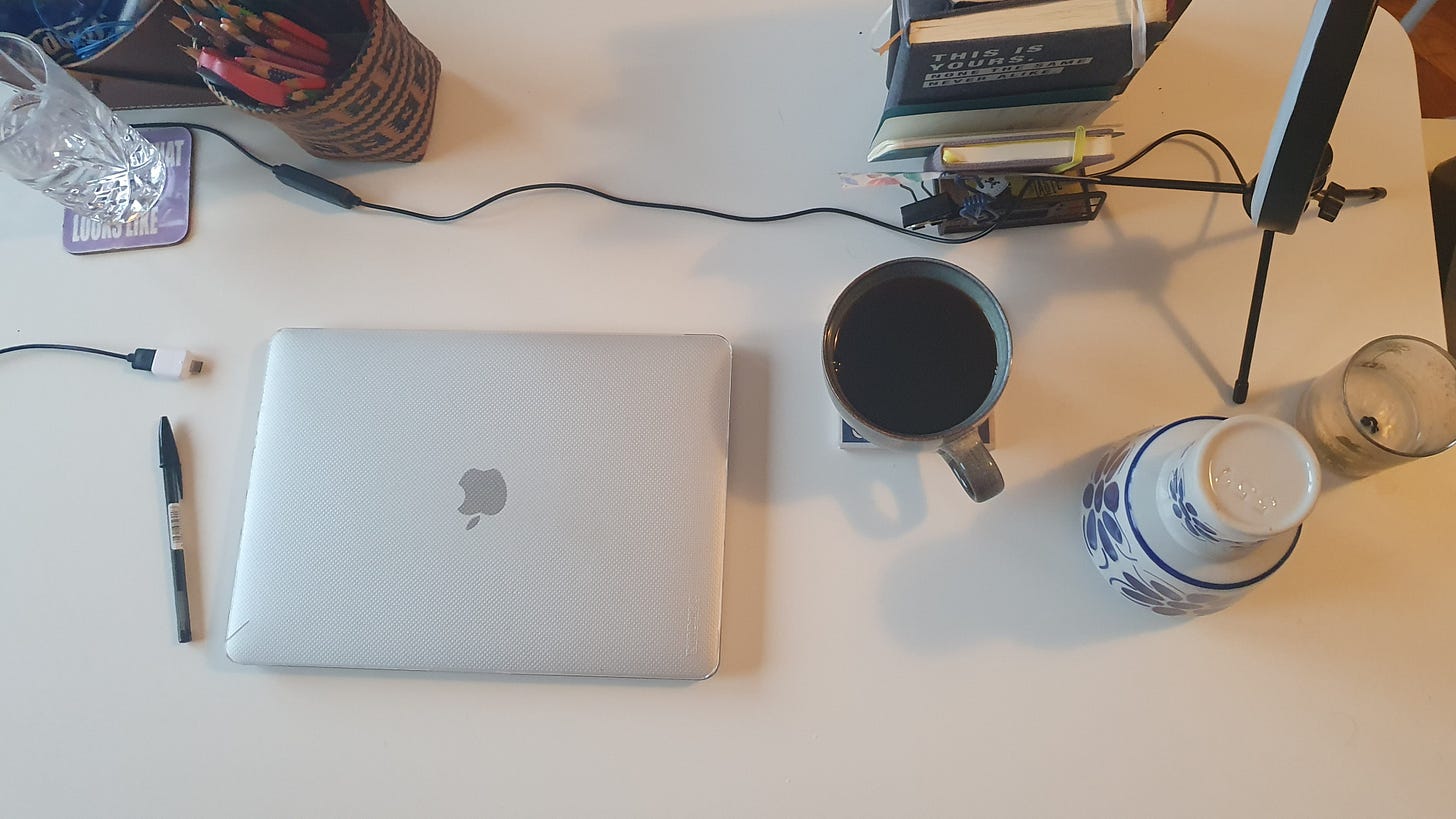Process and Inspiration in Writing
What people think writing looks like vs. how writing really looks like
When people learn that I’m a writer, they almost always ask whether I’m getting enough inspiration. They’re usually surprised to hear that I write whether or not I’m inspired. I suppose that crushes the romantic idea of the writer and her muse and perhaps makes them doubtful about the quality of my writing. Then again, it’s persistence that brings results.
Don’t get me wrong, I love my muse and would love her to show up more often, but I cannot depend on her. What I can depend on is the process, a mundane combination of rituals, persistence and repetition, like getting up early, making a cup of tea and meeting the blank page before having breakfast.
I haven’t always trusted the process, though. For starters, it’s intangible and evasive. What worked a few years ago might not work anymore and once you think you’ve got it all figured out, the ground usually shifts. Our process is bound to develop and change as we grow as writers. There are, however, elements to be considered, from the time of day, the working space and reading and revising habits to small tricks that help us create.
In ‘Process’, Sarah Stodola breaks down the writing habits and routines of eighteen authors, including Margaret Atwood, Zadie Smith, Toni Morrison, Franz Kafka, Virginia Woolf, George Orwell and F. Scott Fitzgerald. While there are some similarities, their processes are mostly quite different.
F. Scott Fitzgerald, for example, never maintained a regular writing routine and wrote in bursts whenever he needed income. He rarely got any writing done before 5pm and planned his work compulsively, only to ignore those plans later on. Toni Morrison, on the other hand, adopted a practice of getting up at 4am so she could write before the kids got up and she had to leave for work. She kept this practice, as she found out that she can write with bigger clarity before the light arrives.
Franz Kafka needed solitude to write and often wrote late in the evening, after his family had gone to sleep. Some writers love using pinboards or start the day by reading and revising what they wrote the day before. Others don’t even have a trusted reader or sounding board, or they do without a dedicated writing space. Many writers, I’ve learned, don’t think a lot about their process, but they have a set of practices that work for them.
The good thing about the process is that you don’t have to be conscious of it for it to work. Being aware of what works and what doesn’t can help optimise it.
I honed my process by trial and error and found out that a separate writing space and silence did magic for my writing. I found out that if I show up at the same place and same time every day, my brain understands that it’s time to write.
Since I write better in the morning, I protect that space for any writing or creative work, keeping my phone on silent and in another room. Most people know I’m not available before lunch because I’m working. They rarely ask for details. I imagine that knowing I’m hitting the keyboard and drinking copious amounts of tea might somewhat kill the magic.





